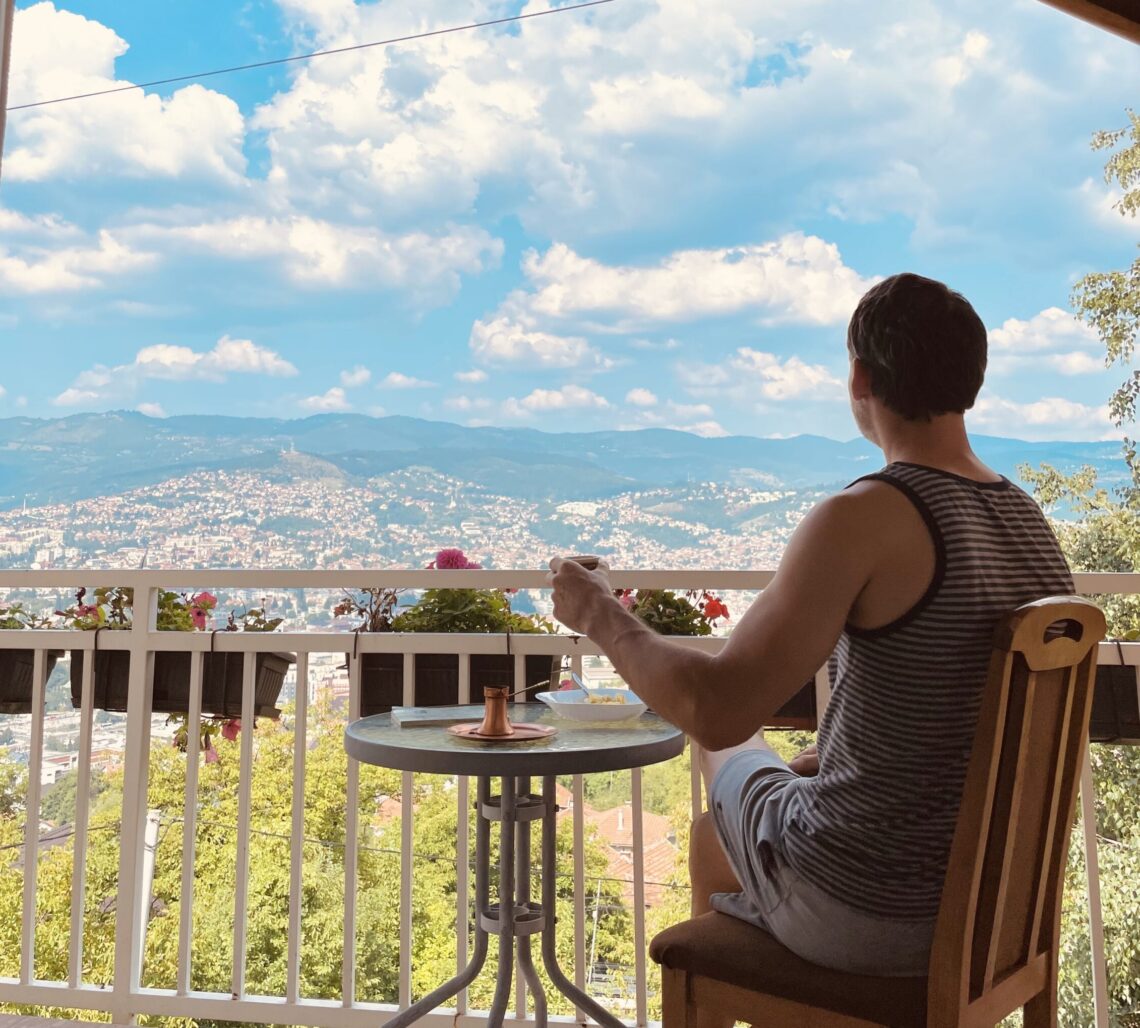
Guide to Sarajevo: Cultural diversity at its finest
Sarajevo has a history filled with conflict, division and frequent change of leadership and rule. However. today it remains one the more peaceful places to visit, not only in the Balkans but throughout Europe. This Balkan gem is a dream visit for history and cultural enthusiasts. In this Guide to Sarajevo, we’ll discuss everything from destinations one should visit, diversity, war, infamous assassinations, Olympic Games, good vibes and my thoughts on all of it!
The relaxed vibes in Sarajevo are a treat for anyone making a visit. Cultural diversity is seen everywhere, and it’s really cool! You have Muslim (51%) Eastern Orthodox (31%) and Catholics (15%) present throughout the country yet peaceful vibes are seen everywhere!
There are strong opinions in Sarajevo, which aren’t widely seen nor felt, so the city is incredibly comfortable and inviting. We’d be lying to ourselves if we were to say any place is free from possessing strong opinions, including places we choose to call home.
Sarajevo is as safe as they come, peaceful, interesting and lots of fun! The culture, tradition and purpose are beaming throughout the city, which is completely different from the West. I cannot say enough about the people and vibes here. If the rest of the world were a bit more like Sarajevo, I can’t help but to think how much better a quality of life would be. Come along, let me show you the serene feels and excitement in Sarajevo!
You’ll do yourself a favor by coming to this region of the world to experience what an openly culturally diverse city feels like and how peaceful it can be. How peaceful it is! One visit to Sarajevo just might have you questioning many things we hear from the mainstream. For those seeking a change of scene, visiting Sarajevo will open your eyes to new experiences, possibilities and perspectives!
Guide to Sarajevo
- Baščaršija: Old bazaar of Sarajevo
- Latin Bridge
- Trebević Planina: Trebević Mountain
- Abandoned 1984 Winter Olympics Bobsled Track
- Tunnel of Hope: Sarajevo War Tunnel
- Žičara: Sarajevo Cable Car
- Gazi Husrev-beg Mosque
- Sebilj Fountain
- Sarajevo City Hall: Vijećnica
- Sacred Heart Cathedral
- Yellow Fortress (Žuta Tabija): Yellow Bastion of Sarajevo
- Your Turn for a Visit
- How to make traditional Bosnian coffee: Local Knowledge
For this post, I’ve put together a Guide to Sarajevo, Bosnia and Herzegovina. Consider this an outline for your visit as you wander around and experience your own vibes. Perhaps you just want to read up on Sarajevo, this is also exciting! If you are to take a visit to Sarajevo, combining these destinations, along with your own adventures, make for an ideal multiple day itinerary.
1. Baščaršija: Old bazaar of Sarajevo
Baščaršija is the old Bazaar and cultural center of Sarajevo. ‘Bazaar’ means ‘market’ and typically refers to street markets. Baščaršija is the clear choice for a top spot in my Guide to Sarajevo. This old bazaar is essentially the nucleus of Sarajevo. It’s the energy, and where this energy diverts from. These old bazaar street markets still exist today inside Baščaršija, now primarily as tourist attractions during summer months, although many locals continue to frequent the area for coffee and dining.
Baščaršija is a Turkish word, as much of the influence in Bosnia and Herzegovina stems from the Ottoman Empire. The Ottomans ruled the region for several hundred years, through 1908, when Austria-Hungary annexed the country.
The busy streets are filled with shops selling authentic Bosnian goods and handmade items. Cafes serve traditional Bosnian coffee. Restaurants are serving up their personal touch of local cuisine. People are out exploring and enjoying it all. So, needless to say, this is a great area to purchase a souvenir and indulge the local cuisine and coffee scene. I have rule, kind of. I only buy a souvenir if I’m extremely moved by a destination in which I’m visiting. Each and every place is special, but some just feel a bit different. Sarajevo gave me this experience, so I bought a casual wrist bracelet, right here in Baščaršija.
Historical Sites in Baščaršija
There are many historical and religious sites in Baščaršija, many of which I’ve included in this Guide to Sarajevo. Religious buildings include the Gazi Husrev-beg Mosque, the Old Orthodox Church and the Old Synagogue. Sebilj Fountain is another monumental landmark within Baščaršija. The fountain became so popular, it’s been replicated several times around the world. I’ll talk more about the fountain below as it’s also a top destination in this Guide to Sarajevo.
2. Latin Bridge
One of the most significant pieces of history in Sarajevo, Southeastern Europe and even the world happened right here on the Latin Bridge! I’ll get into that in just a second.
The Latin Bridge lies across the Miljacka River, just outside of Baščaršija. The now stone bridge is one of the oldest bridges remaining in Sarajevo. Initially thought to have been built of wood, the Latin Bridge is now made of stone due to many instances of damage to the wooden structure. This reconstruction from wood to stone was completed in 1791.
Assassination of Franz Ferdinand
During the Yugoslavian era in 1918, the Latin Bridge was renamed to Princip’s Bridge, after Gavrilo Princip assassinated Archduke Franz Ferdinand, heir presumptive to the throne of Austria-Hungary. The assassination took place on June 28, 1914 and is considered one of key events which initiated World War I!
Gavrilo Princip was a Bosnian Serb student. He joined a secret society called ‘Young Bosnia” where he plotted the assassination. Initially, Gavrilo was not part of the direct assassination attempt but after hearing about several failed attempts on Ferdinand’s life earlier in the day, he pulled out a revolver as Ferdinand’s motorcade crossed the Latin Bridge. Here, he killed Ferdinand and his wife, Sophie, while they were sitting inside of their vehicle. The bridge was renamed back to its original name, Latin Bridge, after the Yugoslav War ended.
As you can imagine, there is some significant history on this small bridge, which is closed to automobiles. Only spectators and cyclists can access Latin Bridge. I took several walks along the Latin Bridge, imagining how the assassination of Archduke Franz Ferdinand may have unfolded. Needless to say, this is a must-see destination when visiting Sarajevo!
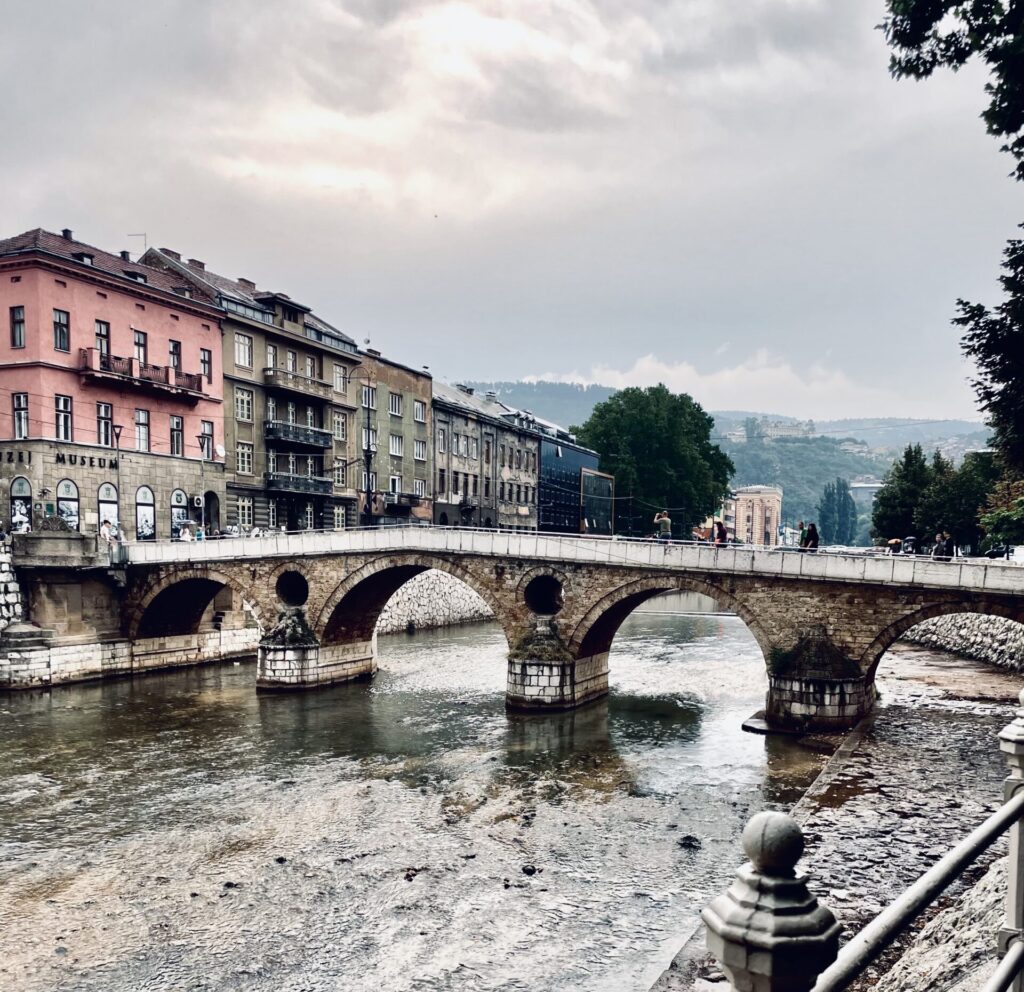
3. Trebević Planina (Trebević Mountain)
Trebević Planina, or mountain, is located across the Miljacka River from Sarajevo, roughly 20 kilometers away from the Latin Bridge and city of Sarajevo. Once here, there are numerous attractions you’ll want to visit, including a few I’ve mentioned in this Guide to Sarajevo. With many opportunities for outdoor adventure and relaxation, Trebević Mountain is a popular destination for locals and tourists alike. Hiking, mountain biking, snow skiing, picnics, views, žičara cable car and an abandoned Olympic Bobsled track! Again, this is another must-see destination when visiting Sarajevo. There are many here, and my standards are quite high for this!
Number six on this list, žičara, is a cable car that will take you from the bottom to the top of Trebević Mountain. Žičara, in local language means exactly what you would expect, ‘cable car’. Number four on in this Guide to Sarajevo is the abandoned olympic bobsled track! This was one of my absolute favorite adventures while in Sarajevo. I’ll talk more about these two, žičara and the Olympic bobsled track, later.
Brus and Čolina Kapa
Enjoy the day at Brus, a large outdoor area where many locals enjoy their free time. Spend an afternoon picnicking or hiking to the top of Trebević. Another point of interest on Trebević Mountain is the Čolina Kapa observatory, a military fortification built during the Austro-Hungarian times is another place to explore. At this time of Austro-Hungarian rule, it was called Bistrik Tower and used for military purposes. Bistrik is the name of the town at the bottom of Trebević Mountain, and thus, where the name Bistrik Tower came from. The exceptional views of Sarajevo made this location an ideal spot for the lookout tower.
After the second World War, Bistrik Tower was converted to an astrological observatory, now named Čolina Kapa. As many structures experienced during the Bosnian Wars in the 1990’s, Čolina Kapa was severely damaged. Funds for repairs have been limited so this observatory has also been abandoned. It remains a popular spot for tourists. You’re able to go inside and explore as you wish but be careful. The structure is not maintained and who knows the status and security of its foundation.
Time needed on the Mountain
Visiting Trebević Mountain can be either a half or full day trip, depending on how many places you plan to visit and how much time you spend at each. If you’re going to hike, relax, eat, and explore multiple areas, allow yourself a full day. If you simply want to ride the žičara and explore briefly while grabbing a quick bite to eat, a half day is plenty of time.
4. Abandoned 1984 Winter Olympics Bobsled Track
The abandoned Olympic bobsled track remains in decent condition. Aside, from overgrown shrubs, grass and graffiti tagging, the concrete slab tracks have withstood decades of abandonment, not to mention several years of war! The graffiti offers a nice aesthetic touch. It’s something I would expect to see on abandoned concrete surfaces. I don’t know the rules, but bring some paint and tag your name, or create a larger design. Mark your journey, it appears to be just fine!

So, this track feels abandoned. There aren’t any barriers, warning signs, roping, queues or guides. From the top station, after exiting the žičara, walk north down Trebević Mountain until you’ll stumble upon the beginning of the tracks. From there, you’re on your own. I love this about it, view as you please. Pay your cable car fee and you’re free to do as you wish without the need to purchase additional tickets for viewing the track. It’s literally abandoned, you can explore it just as you would a public park, perhaps even more so.
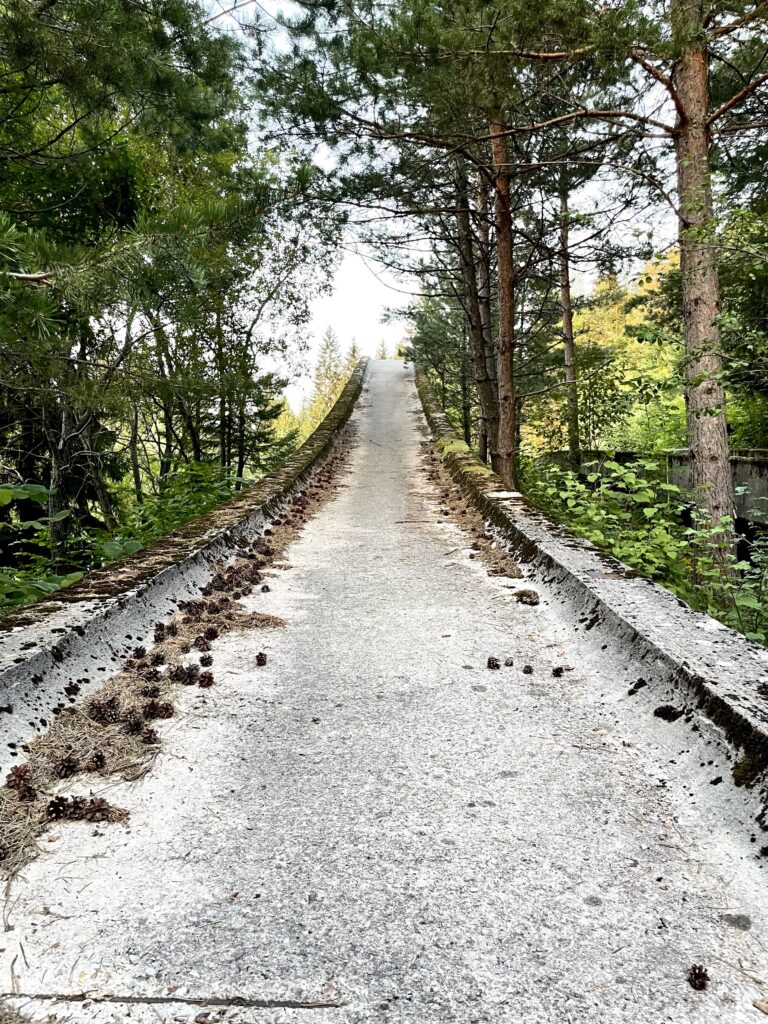
This was my favorite destination to explore in Sarajevo. Several kilometers in length, lots of art work and concrete slabs to observe. These concrete slabs, once covered with ice, now covered with shrubs and overgrown grass. It once supported Olympic medalists. A few years later, this now abandoned track, aided and supported the local Bosnian war efforts. If you’re an energy person. You’ll feel it out there!
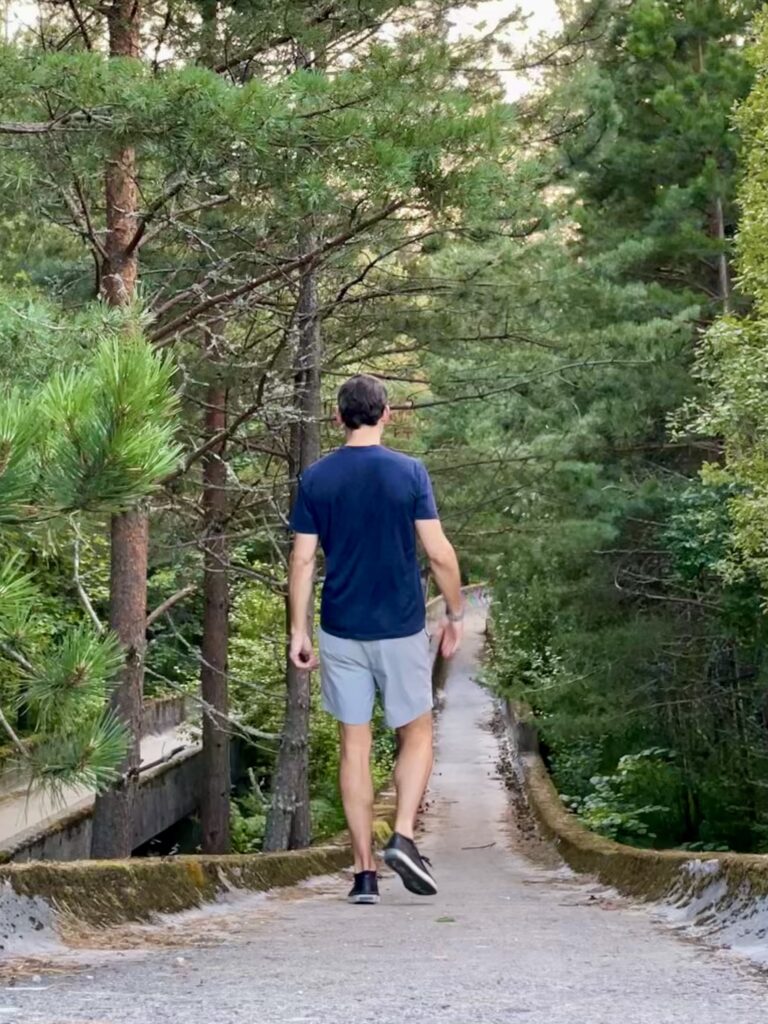
The abandoned bobsled track is about 15 minutes’ walk down from the top of žičara cable car, situated right in the middle of nature! It leads all the way to the bottom of the mountain and acts as a pathway down so you can make this hike rather than purchasing a return ticket on žičara. Doing this way will save you 10KM, or about $5.
This could be atop the list on my Guide to Sarajevo. I enjoyed it so much, I created a reel about it! Let me know if you enjoy it by clicking the like button. If you like to see new places in the world with raw perspective, click that follow button on Instagram.
5. Tunnel of Hope: Sarajevo War Tunnel
Construction
The Sarajevo War Tunnel was built discreetly. This secret, and significant Tunnel of Hope underwent construction on March 1, 1993 with a codename of Objekt BD. The Sarajevo War Tunnel, or Tunnel of Hope, was built by the Bosnian military to help defeat the Serbian ‘Siege of Sarajevo’, which was a large part of the Bosnian and Yugoslav Wars of the 1990’s. Construction of the tunnel finished in June of 1993. It connected Sarajevo to land opposite of the Sarajevo airport, which was temporarily held by the United Nations, an ally.
A lack of manpower and skills presented a problem for construction of the tunnel. It was dug by hand, picks and shovels due to inadequate equipment and the need for concealment. Laborers traded eight-hour shifts for around-the-clock work. Payment for work was issued in the form of cigarettes, one pack per day. This does not seem like much but during the times, cigarettes were a highly valued bartering possession. Still, not a very good trade for the laborers!
Purpose of the Tunnel
The tunnel was the essential passage way for everything entering and leaving Sarajevo as the city was entirely cut off by Serbian forces. Food, people, petrol, weapons, literature, cigarettes, alcohol. Just about everything was sent through the tunnel as the war ravaged on. At first, these items were transported by hand which took about 2 hours to transport through the tunnel. A year later, railway tracks and small carts were built and installed. This addition of the tunnel significantly sped up the transportation of goods and supplies through the Tunnel of Hope.
Sarajevo War Tunnel today
Today, a brief portion of the tunnel remains for tourist activities. The Butmir entrance is where the Kolar family maintains the private and non-government funded Sarajevo War Tunnel Museum. They also feature roughly 20 meters of the original tunnel. This museum is the exact entrance of the Butmir side entry point to the Sarajevo War Tunnel. The opposite entry point was Dobrinja. Dobrinja, and the remainder of the tunnel no longer exist due to its abandonments after the war ended.
Flooding and collapsing land have ruined the tunnel which has not been maintained. However, the small portion operated by the Kolar family and their museum, remains intact and appears to be safe for short tours, which last only a few minutes.
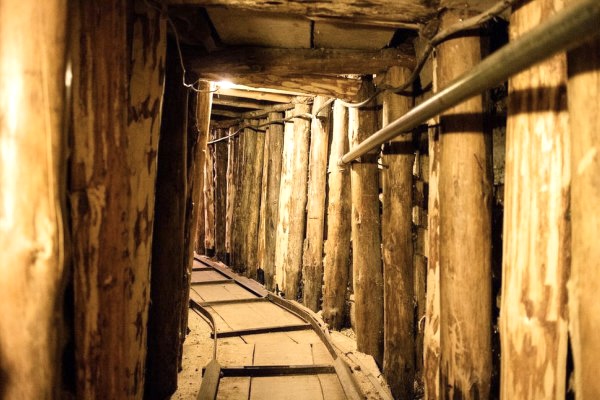
Getting to Sarajevo War Tunnel
The Sarajevo War Tunnel is one of few destinations which is not possible to arrive at by foot. You will need to either taxi or take the public tram to Western Sarajevo, where both the Sarajevo War Tunnel and museum are located. Taxi will take you about 20 minutes. I’d suggest purchasing a tour of the tunnel which covers both transportation to and entry into the museum and Sarajevo War Tunnel.
6. Žičara: Sarajevo Cable Car
Žičara, which means ‘cable car’ in the Bosnian Language, is the Sarajevo cable care. It is also known as the Trebević Cable Car, which connect the old city of Sarajevo to Trebević Mountain. The žičara was built in 1959 and had a capacity to transport 400 passengers per hour, up and down the mountain.
Due to many issues with the cable car, it was banned from operating in the late 1980’s. During the Yugoslav and Bosnian War, žičara was completely destroyed. Later, the cable car was reconstructed, opening again to the public on April 6, 2018. The new žičara had a total of 33 gondolas and could transport up to 1200 passengers per hour. The total length of a one-way ride up or down the mountain is roughly nine minutes.
The top station features a café called coffee2go. Here, along with the journey upward, you’ll be delighted with panoramic views of Trebević Mountain and Sarajevo. Once you reach the top, you’ll be greeted with many places to explore. I’ve listed several places in the number three place to visit, Trebević Mountain, in this Guide to Sarajevo. Tickets for a two-way ride on žičara cost 20KM, or about $11USD. Tickets may be purchased at the bottom station.
Getting to Žičara
Finding žičara is not difficult. If you are having trouble locating the lower station, take a look at Google Maps. From the City Hall Building, walk South until you reach Avdage Śahinagića Street. Continue walking south until you reach a staircase. The entrance is at the top of the staircase. Once you purchase tickets, walk up another staircase beside the ticket window and hop on a gondola, or žičara. Enjoy!
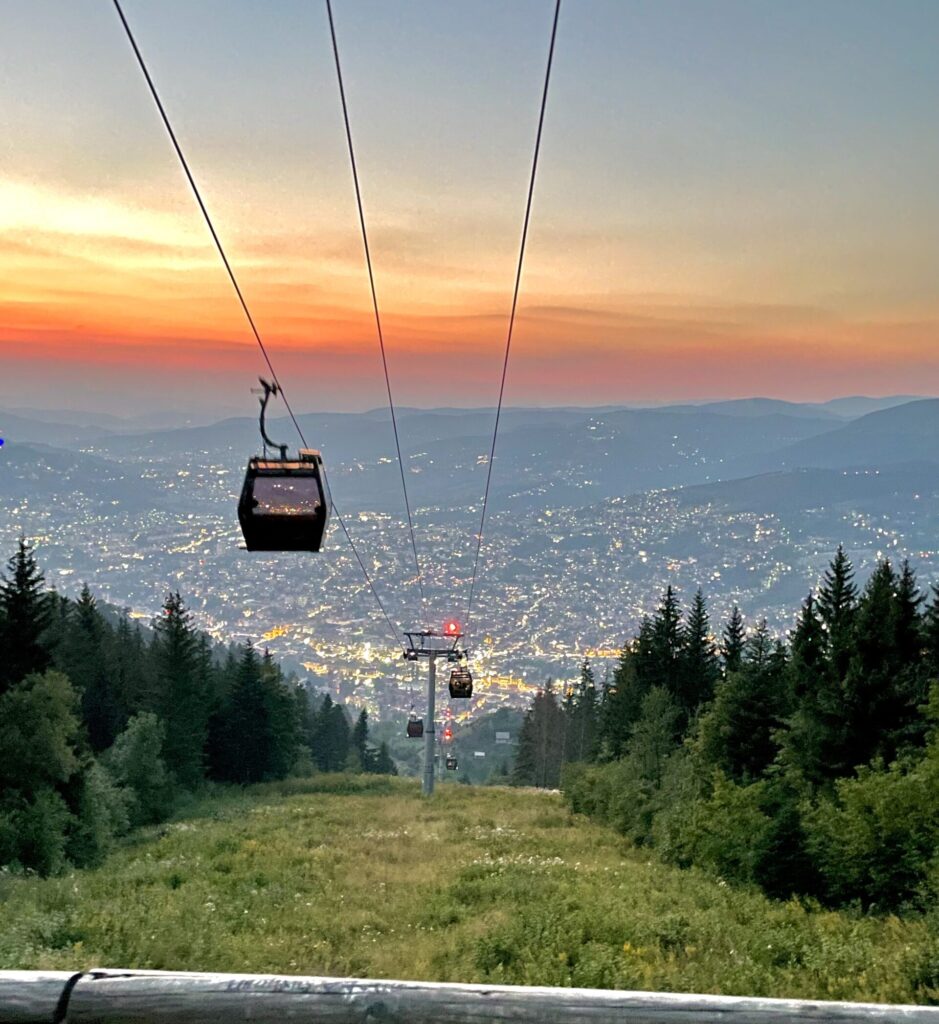
7. Gazi Husrev-beg Mosque
Built in the 16th century, Gazi Husrev-beg Mosque serves as the main congregational mosque of Muslims in Bosnia and Herzegovina. The mosques central location in Baščaršija and its fascinating architectural structure make it a popular destination for tourists exploring the cities center. Featuring architecture from the Ottoman days, Gazi Husrev-beg Mosque remains one of the largest in Bosnia.
An interesting fact about the mosque: In 1898, it was the first mosque with electrical use.
During the siege of Saraejvo in the 1990’s, Gazi Husrev-beg Mosque was badly damaged. It was an obvious target by the Serbs, whom were the majority attackers of Sarajevo and Bosnia. Repairs to the mosque began in 1996, after the wars came to a conclusion. International aid funded the reconstruction, mostly by Saudi Arabia. By 2001, the mosque was generally finished with its repairs after the interior was redesigned.
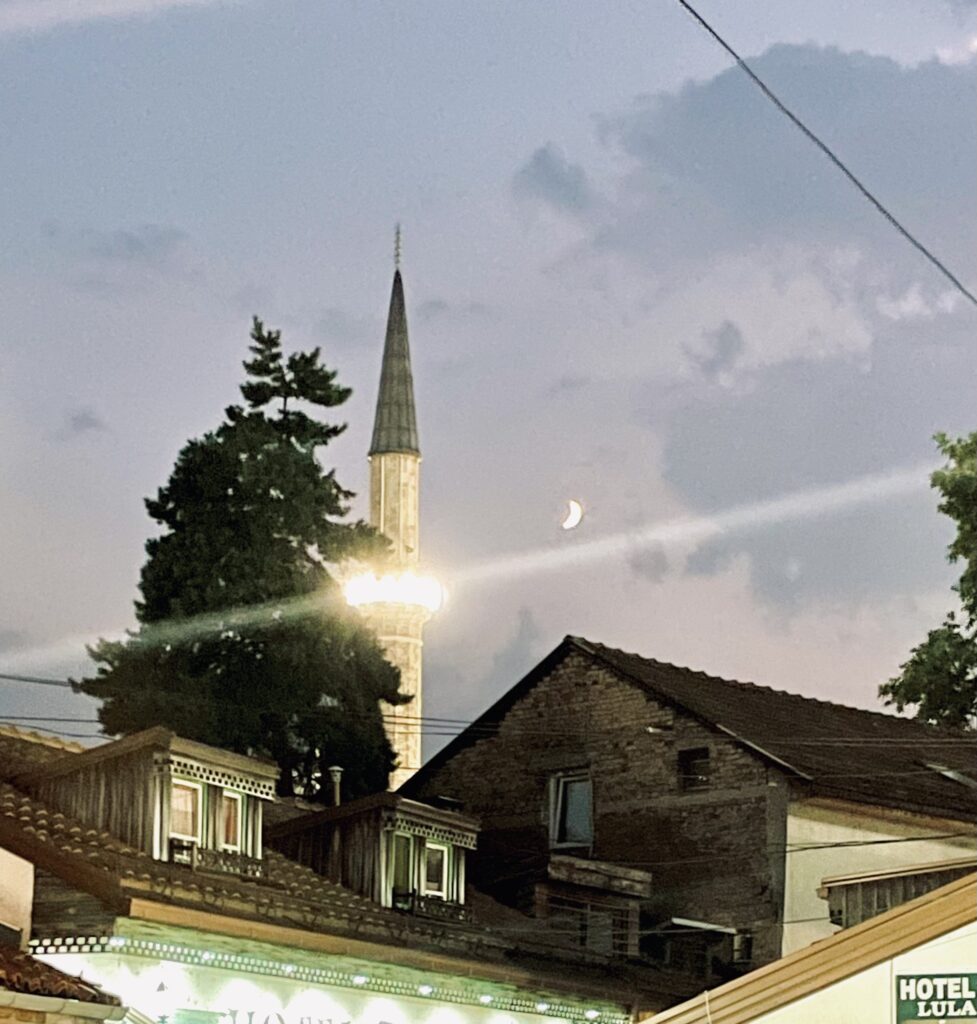
8. Sebilj Fountain
An Ottoman-style fountain, Sebijl is centrally located in Baščaršija. Sarajevo water supply was built in the mid 15th century and expanded throughout the 16th century during the golden age. Sebilj Fountain was built in 1753 by Mehmed Pasha Kukavica and later relocated by Austrian architect, Alexander Wittek in 1891, who was working for the Austro-Hungarian Empire. The fountain was built with influence of Islamic architecture, a pseudo-Moorish style.
There’s an old saying in Sarajevo, whomever drinks from Sebijl Fountain will return one day. Now, with ease of travel and the evolution of civilization, this may not seem like such a lottery today but it’s an interesting legend. Yes, I drank from the fountain, filling my water bottle one warm August afternoon as I wandered the streets of Baščaršija, the old bazaar of Sarajevo. I don’t believe in much other than common sense and positive energy but not much interests me more while traveling than indulging and experiencing the local cultures. I have a good feeling about my return to Sarajevo!
The square surrounding Sebijl Fountain, known as Pigeon Square, is habitat to thousands of pigeons. You’ll see pigeons scattered throughout the grounds surrounding the fountain. Sebijl Fountain is a popular spot for locals. If you’re in the area for long and meeting with a local, Sebijl Fountain will likely be the suggested meeting point.
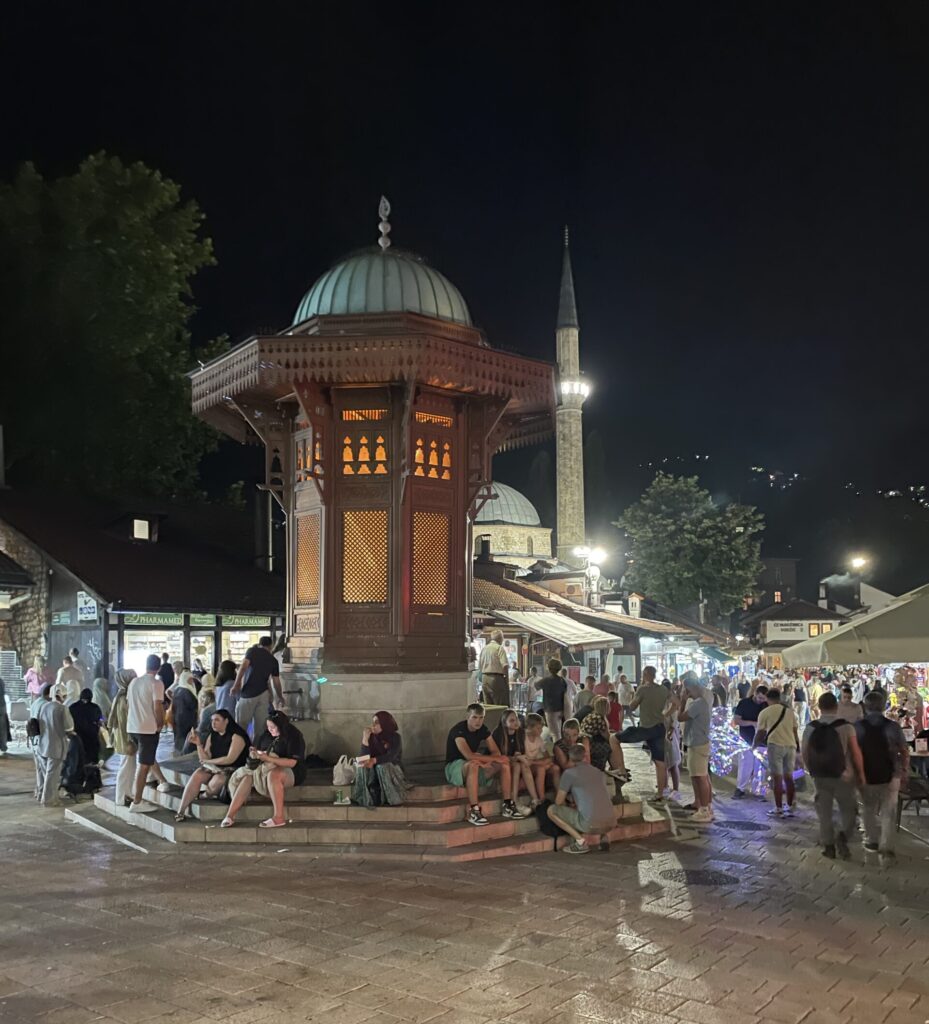
9. Sarajevo City Hall: Vijećnica
Sarajevo City Hall, known as Vijećnica, is located in the center of Sarajevo and along the banks of the Miljacka River. Designed in 1891 with construction beginning the following year. The project was completed in 1894 at a total cost of 984,000 crowns. April 20, 1896 marks the grand opening for Vijenćnica, where it was also handed over to city authority. The building was occupied by the city until just after World War II, when it was turned over to the National and University Library of BiH.
Vijećnica was an extravagant building, especially for the times it was constructed in. The design, or expressions referenced were that of pseudo-Moorish. The design, at this time, was considered a blending of cultures. Pseudo-Moorish designs were known to be an Islamic style, a viewed held by the west. As a result of Serbian shelling on August 25, 1992, the building went up in flames and completely destroyed as hundreds of Bosnian manuscripts and publications were ruined. Citizens and librarians attempted to salvage what they could but they majority of books and documents did not outlast the fires.
The building was eventually restored, which took the better part of two decades. It was reopened May 9, 2014, now a national monument used for a variety of purposes such as governmental, concerts and exhibitions. At night, the building is lit up in several colors making this a nice stop for you to enjoy while exploring Sarajevo. If you’re riding down the žičara after dark, you’ll pass right by the City Hall building as you exit the lower station. From here, you can cross the Miljacka river toward Baščaršija where several places await you for dinner!
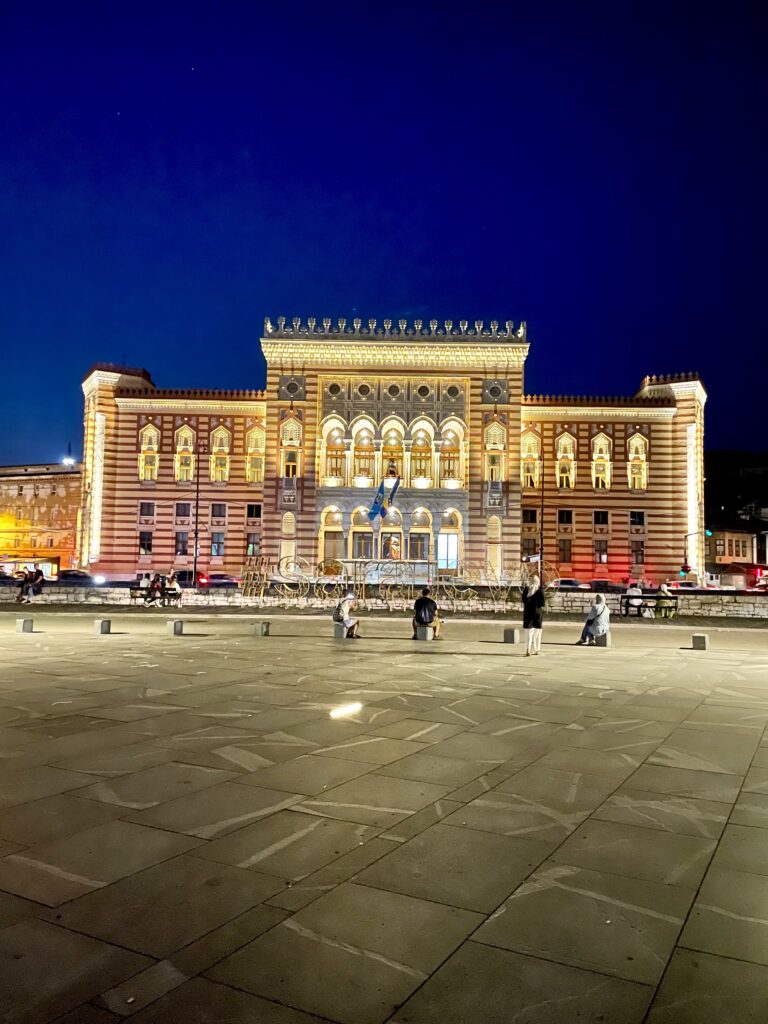
10. Sacred Heart Cathedral
Sacred Heart Cathedral is a Catholic Church in Sarajevo and the largest cathedral in all of Bosnia and Herzegovina. Often referred as Sarajevo Cathedral, Sacred Heart Cathedral is located in Stari Grad, just outside of the old city, Baščaršija. It’s is the center of Catholic worship in Sarajevo and holds the seat of Archdiocese of Vrhbosna. Vrhbosna is a name for a small region in central Bosnia and Herzegovina which has now become part of Sarajevo. The Cardinal of Sacred Heart Cathedral is Cardinal Tomo Vukšić.
The construction of Sacred Heart Cathedral began in august of 1884 and was completed over three years later in November of 1887. It was consecrated for sacred use a month later. The building resembles Neo-Gothic style and was modeled after the Notre Dame in France.
Peace demonstrations took place outside of the Cathedral in 1991, prior to the Bosnian War. During the Siege of Sarajevo, the building was damaged but later repaired. This cathedral is known as a symbol of Sarajevo. A design above the cathedral door is represented on the city flag and its Romanesque towers are also on the flag and coat of arms of Sarajevo.
You’ll pass this massive building one time or another as you stroll the streets of Baščaršija. A decent sized square located outside the front doors of Sacred Heart Cathedral is where you’ll find people gathered. Surround by restaurants, shops, pedestrians and people taking photos, this cathedral is in the midst of Sarajevo, a popular area to relax and enjoy the peaceful vibes of Sarajevo.
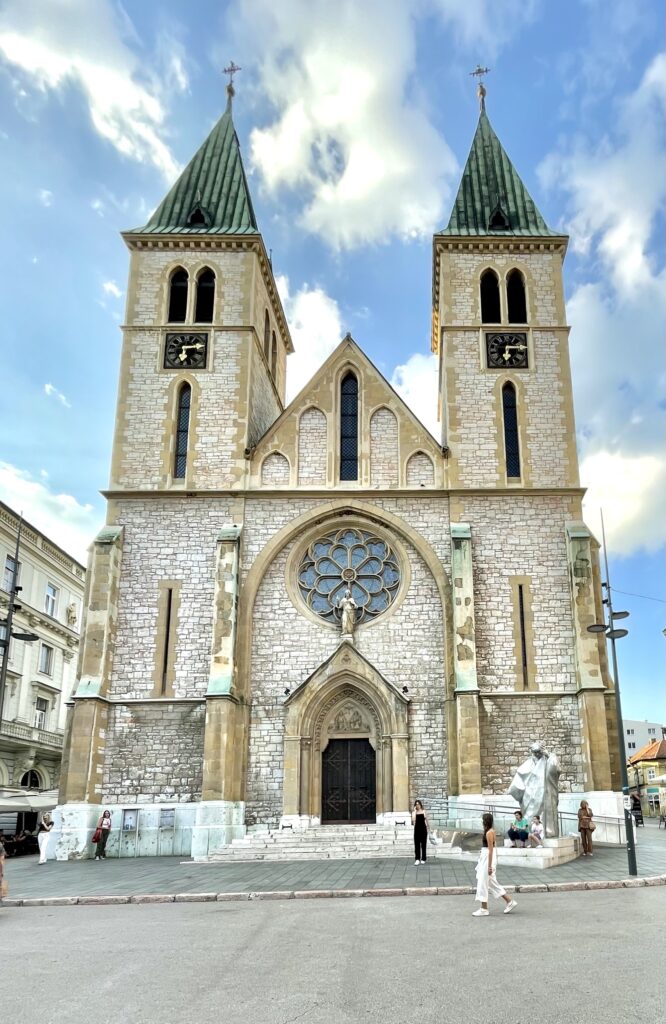
11. Yellow Fortress (Žuta Tabija): Yellow Bastion of Sarajevo
The Yellow Fortress of Sarajevo is a defense structure located at the entrance to the town of Vratnik. It is one of five defense structures built along the wall of Vratnik to defend Sarajevo from the Austro-Hungarian Empire. The Yellow Fortress is one of two defense structures remaining today.
The name ‘Yellow Fortress’ comes from the color of rocks used to build the fortress, which was originally used as a cannon fortress, firing cannons towards the enemy. During Ramadan, a cannon blank is fired to announce iftar, which is the name for the meal eaten by Muslims during Ramadan. Iftar is consumed after sunset and a day of fasting.
The Yellow Fortress is a 20-minute walk from Baščaršija, where you’ll pass by old Turkish houses built during the Ottoman Empire. Old town feels will follow you as you walk the neighbor hills upward toward the Yellow Bastion Fortress. The Yellow Fortress now simply acts as a viewpoint over the city of Sarajevo. Locals, tourists and visitors alike gather to enjoy exceptional views overlooking the city. You can expect the following views from the Yellow Fortress of Sarajevo, which also includes and open-air cafe on top: Baščaršija, City Sarajevo Hall, Martyr’s (Kovači) Cemetery and the Miljacka River.
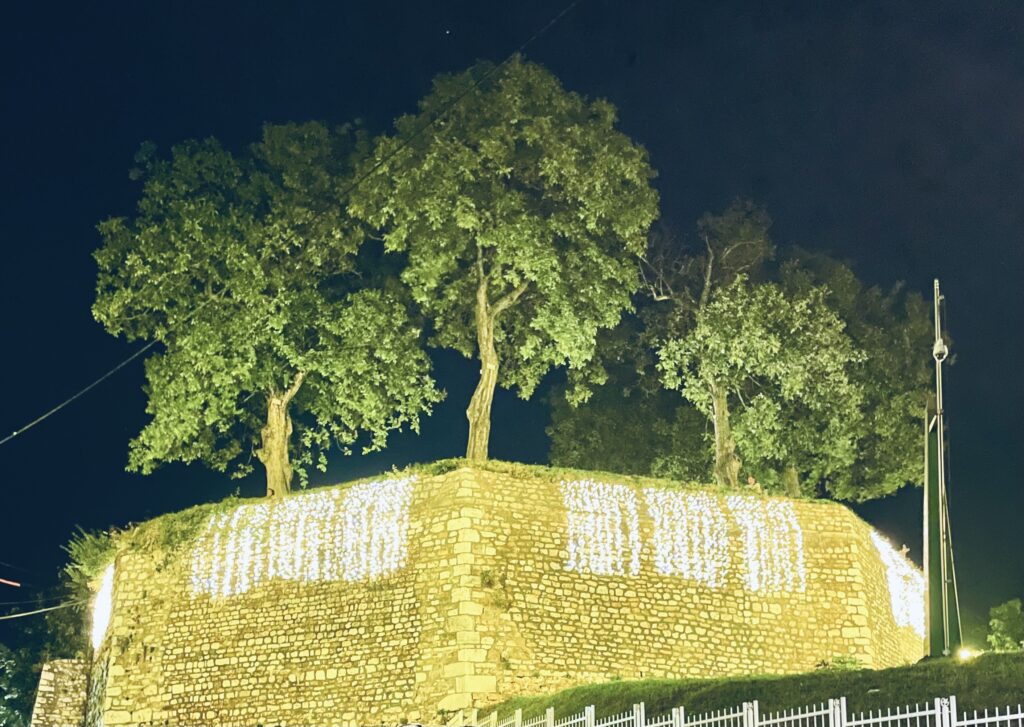
Your Turn for a Visit
No matter where your feet lead you to in Sarajevo, stunning views are in order. Whether you’re looking up or down Trebević Planina, along the Mijacka River and its numerous bridges, inside the old city of Baščaršija, or into the sky for sunset and moon views. Sarajevo will seduce you, the people will impress you and the vibes will follow you. I enjoyed my visit so much, I extended my stay by three days!
I hope that you have time to make it to Sarajevo one day. Whether you do or not, simply knowing and reading about the city, it’s history, struggles, perseverance and humility of the people living here, is rewarding enough.
Now that you’ve read what Sarajevo has to offer, reach out to me with any questions or comments. Check out some Instagram highlights from my visit for a deeper dive into Sarajevo. Please like, follow and share if you enjoy what you see!
Check out this post I wrote while in Sarajevo, How to make traditional Bosnian coffee: Local Knowledge!


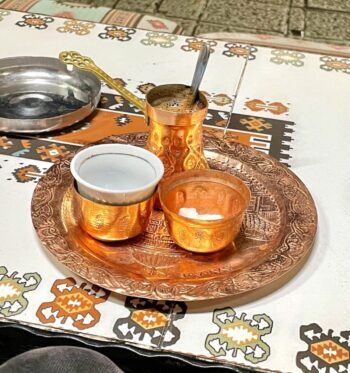
2 Comments
Fatin Suheila
Love your post on Sarajevo. Thank uuu !!
Scott
Hi Fatin, glad you enjoyed! Thanks for viewing and stay tuned for more!